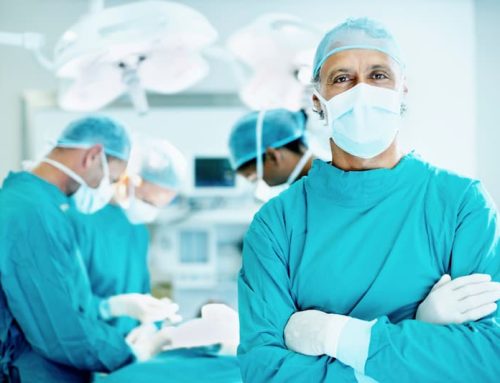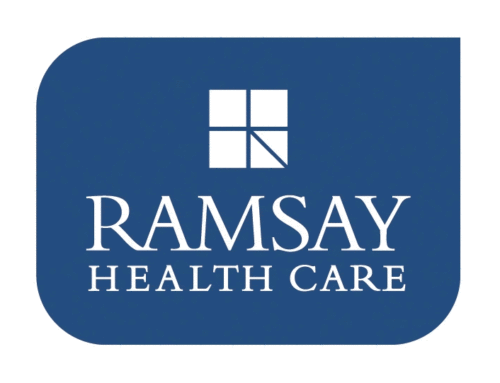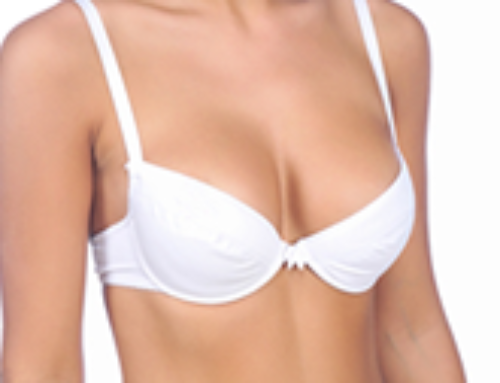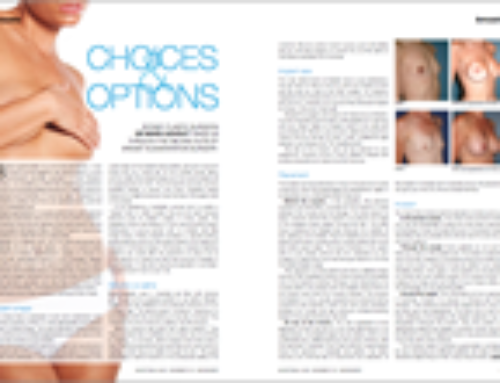
With ageing, the cheeks, lips, chin, jaw and forehead decrease in size. The fat, muscle and connective tissues atrophy or waste away, leaving behind unsupported skin. As the support underlying the skin disappears, the skin falls into wrinkles and folds.
When the cheek becomes smaller, bags under the eyes become more prominent. Similarly, as the jaw line and chin lose their prominence, jowls appear and as the youthful fullness of the brow and upper eyelid dissipates, an empty sack of skin is left behind.
Since shrinkage of the subcutaneous tissues and fat is the primary manifestation of ageing, I believe replacement of the atrophied tissue with the patient’s own fat is an obvious method of rejuvenation. Injecting their own fat, a living filler, can augment the structure of the cheeks, mouth, lips, chin, jaw line and forehead – as well as help to restore the fullness of youth.
Traditional facelift surgery is designed to cut away the excess tissue and pull the skin to make it tighter. This results in a tighter look, but not necessarily a fresh or rejuvenated appearance.
Fat injection, or lipofilling, tends to enhance the facial structures and give a youthful look by supporting the skin and improving its quality.
Enhancing facial proportions
An advanced and refined technique, known as structural micro fat grafting, can be used to restore facial volume and harmony. It is a revolutionary technique that uses the patient’s own body fat as a natural living filler to achieve structural alterations wherever it is placed.
There is also emerging evidence that the fat cells not only enhance volume but also improve skin quality due to the presence of stem cells in fatty tissue, known as adipocyte-derived stem cells. The stem cells that are harvested with the fat and reinjected in the face tend to improve the appearance of the skin. The skin should look and feel thicker with a youthful fullness.
The fatty tissue that contains stem cells is harvested from the abdomen or thighs through a keyhole in a process known as mini liposuction. The harvested fat is purified and used to fill and restore the fullness lost with age, and to rejuvenate and enhance all areas of the face including the cheek, lip, chin, nose, neck, jaw line, nasolabial folds, marionette lines, brow, upper eyelids and temples.
‘Fat injection tends to enhance the facial structures and give a youthful look by supporting the skin and improving its quality’
The injected fat reduces wrinkles and creases and plumps up areas that have lost volume as a result of surgery, injury, ageing or other causes. Transplanted fat that comes from the patient does not carry a risk of allergic reaction or rejection. When performed by an experienced doctor, it can offer a safe, adaptable and undetectable facial rejuvenation treatment. The procedure is usually performed under local anaesthetic and, due to the minimally invasive nature of the treatment, there is no scarring.
Other advantages include a relatively short recovery time and usually long-lasting results if the fat has been processed and purified properly.
Fat injection using the ‘structural microfat grafting technique’ can be used for the following areas:
Face
The main reasons for adding structure to the face is to replace atrophied tissues and fat, and to enhance facial elements. The common goal of both of these indications is to create a more harmonious and aesthetically appealing proportion of the face.
With age and the loss of the fullness of youth, the face literally gets smaller. The skin remains the same size but, without the underlying structure, the skin retreats into wrinkles. As the missing structure under the skin is restored with fat, wrinkles diminish.
Cheekbones & eyelids
Fat injection, or lipofilling, using the structural microfat grafting technique to the cheek and lower eyelid can restore fullness, soften wrinkles and crow’s feet, decrease pore size and lighten lower eyelid darkness.
A further indication for fat grafting to the cheeks is adjustment of facial proportions. This is most often seen in a younger person who desires more angular cheeks, but it can also be someone who has atrophy associated with acne scarring or ageing. This technique can also be useful for disguising obvious silicone implants, minimising the appearance of bulging eyes, as well as for the correction of facial lypodystrophy and congenital deformities.
Lips
The primary indications for lip augmentation are ageing and a patient’s desire for an adjustment of facial proportion. As a person ages, the lips lose their fullness. Along with a decrease in volume, wrinkling of the upper lip can also be pronounced. The goal of lip augmentation is to create attractive pouty lips. By using a structural microfat grafting technique, the surface area of the lip can be increased and fullness restored.
Brow, eyelids & temples
A definite fullness of the brow, eyelids and the temple region is a key aspect of facial beauty. Fullness characterises the young brow, eyelids and temple. As the fullness of youth disappears, the structures underneath emerge. In the upper face, it is the shape of the skull and the rims around the eyes. The blood vessels are no longer hidden by fullness and become more visible. The muscles of facial expressions are more visible because the youthful fullness no longer impedes their intrinsic tone. This creates a frowning or scowling appearance in many older people.
The eyebrow descends with loss of fullness from the forehead, temple and brow. As fullness disappears from the upper eyelid and brow, many people’s eyes can become more deep-set and skeletal. In others, the lack of fullness results in an empty sac of skin hanging where the fullness once was present.
Employing a structural microfat grafting technique makes it possible to restore the brow, eyelids, and temples to more youthful proportions.
Chin & jaw line
A sculpted, well-contoured jaw line is the hallmark of a youthful appearance. Actors, models and athletes are admired for their sharply defined jaw lines. It is the loss of the fullness in the jaw line and chin that can herald the first signs of ageing. As the underlying fullness is reduced, the face deflates. The skin remains the same size, but without the underlying fullness and support, the emptied skin drapes around the underlying structures of the face. Structural microfat grafting can play a significant role in reversing these age-related changes.
Fat injection can restructure the jaw line and chin to strengthen its appearance. It can also restore fullness between the chin and the fat of the jowl, thereby changing facial proportion to project a more cleanly sculpted profile.
Nasolabial folds & marionette grooves
The nasolabial folds and marionette grooves can convey powerful emotions and generate fixed changes in facial expression. As the face ages, it loses its fullness associated with youth and the skin around the mouth also loses its fullness. This unsupported skin sinks into folds, wrinkles, and creases. As these folds become more pronounced, unintentional emotional expressions can become fixed on the face. Fat injection can soften the nasolabial folds and restore a younger looking appearance.
Neck
A full, taut neck is one of the signs of youth and beauty. With age, subdermal fullness disappears and the skin texture gradually deteriorates, leaving behind unsupported, crepey skin. When structural fullness is added to the neck, it provides underlying support to the skin to restore a more youthful fullness. Recontouring of the neck with structural microfat grafting can provide further enhancement by disguising prominent neck cartilages.
Correction of acne scarring
Ageing and acne both erode the structures under the skin to leave behind an emptier sac of skin. Years of infections and abscesses associated with acne can destroy the normal supporting elements under the skin. The resulting acne scarring of the skin is merely the tip of the iceberg – the subcutaneous structures are also affected by chronic acne.
Acne scarring treated by only altering the skin is incomplete in my view. Restructuring immediately under the skin using the patient’s own skin can restore its texture. Just as important, replacing the volume of tissue loss in the forehead, cheeks, jaw line and chin due to chronic acne can restore a more pleasing proportion to the face.
Other uses
Various body proportions can be enhanced by lipofilling. The grafted fat can be used to enhance buttocks, define the abdomen, create a waist and improve scarring on the face and body
Microfat grafting can also be used to rejuvenate the appearance of the hands. These are one of the most visible unclothed areas of the human body and also one of the first areas to show signs of ageing.
I believe the key to successful rejuvenation of the ageing hand is to create an integrated layer of fat grafts over the back of the hand which makes the skin look and feel thicker with a slight youthful fullness. The back of an attractive, healthy looking hand has a slight fullness that obscures veins and tendons but does not hide them.
Body surface irregularities, such as those resulting from liposuction, can also be treated with structural microfat grafting. Liposuction is one of the most commonly performed cosmetic surgical procedures in the world. It can, however, sometimes produce superficial surface irregularities, known as iatrogenic liposuction deformities.
‘The fatty tissue that contains stem cells is harvested from the abdomen or thighs through a keyhole in a process known as mini liposuction’
Some of these are exaggerations of pre-existing irregularities, others are cellulite or are newly created. The thigh and abdomen are particularly prone to these irregularities, and practitioners must be very meticulous with tissue handling to avoid such common complications.
These body surface irregularities can be corrected with structural microfat grafting. They are challenging deformities and require a three-dimensional visualisation of the problems and solutions. acsm
Once the fat has gone through the purification process, it is ready to be injected in the patient.










